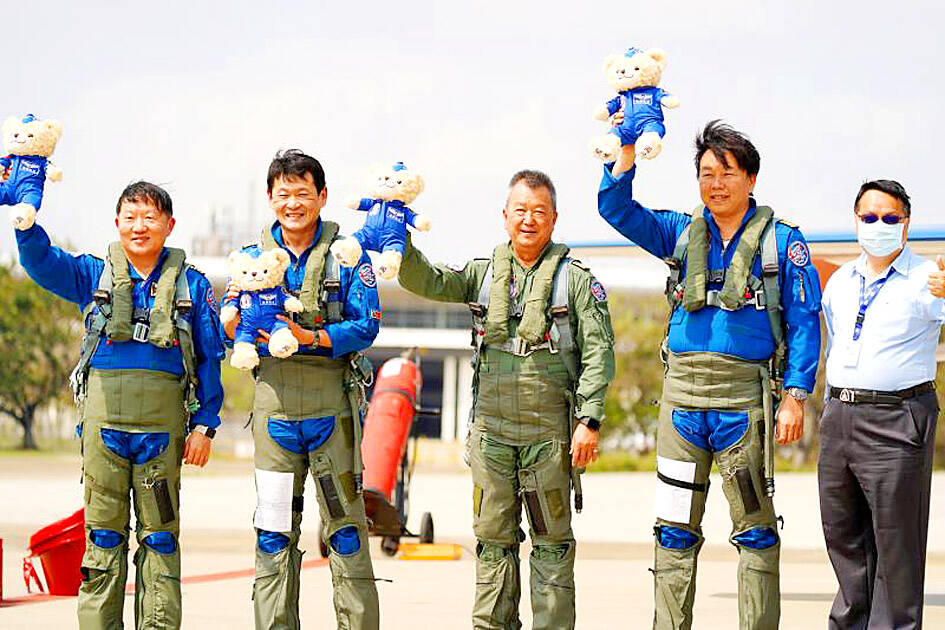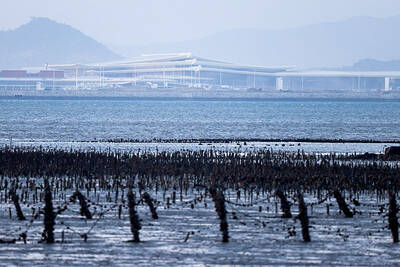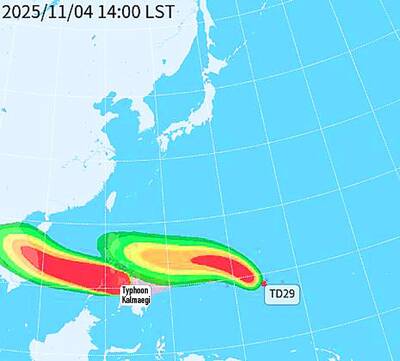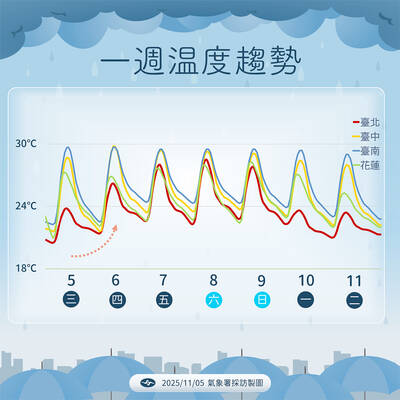Taiwan is seeking US cooperation to make its next domestically developed fighter jet, the head of Taichung-based defense contractor Aerospace Industrial Development Corp (AIDC) said yesterday.
Taiwan’s air force scrambles daily to see off incursions by Chinese jets into airspace near the country, as Beijing steps up pressure on Taipei.
While the mainstay of the air force is Lockheed Martin Corp’s F-16s and French-built Mirages, it also uses AIDC’s F-CK-1 Ching-kuo Indigenous Defense Fighter (IDF).

Photo: Aaron Tu, Taipei Times
The IDF fleet was rolled out more than three decades ago, but has been upgraded.
Speaking at a Taiwan-US defense industry forum in Taipei, AIDC chairman Hu Kai-hung (胡開宏) said the company wanted to raise its technical prowess to help with the development of Taiwan’s next-generation fighter.
“When it comes to the development of the next-generation fighter, we hope the United States supports Taiwan to develop it itself, including the engine, avionics, control systems, environmental controls and so on, which are all an opportunity for Taiwan-US cooperation,” he said.
Taiwan in 2017 announced the next-generation fighter program, to include stealth capabilities, but has given few details since.
Most countries are hesitant to sell weapons to Taiwan for fear of angering China.
Even the US has been unwilling to provide Taiwan its most advanced fighters, such as the F-22 or F-35, and Taiwan has no direct answer to China’s new J-20 stealth fighter.
This has driven Taiwan to develop a new home-built fighter as part of an overall strategy to make more weaponry itself, such as submarines.
“Domestically made aircraft is the road we have to travel,” he said.
AIDC in 2020 test flew a new jet trainer, the AT-5 Brave Eagle, Taiwan’s first jet made domestically since the IDF, and the company is also upgrading the F-16 fleet to the more advanced F-16V version and operates an F-16 maintenance facility.

UNILATERAL MOVES: Officials have raised concerns that Beijing could try to exert economic control over Kinmen in a key development plan next year The Civil Aviation Administration (CAA) yesterday said that China has so far failed to provide any information about a new airport expected to open next year that is less than 10km from a Taiwanese airport, raising flight safety concerns. Xiamen Xiangan International Airport is only about 3km at its closest point from the islands in Kinmen County — the scene of on-off fighting during the Cold War — and construction work can be seen and heard clearly from the Taiwan side. In a written statement sent to Reuters, the CAA said that airports close to each other need detailed advanced

Tropical Storm Fung-Wong would likely strengthen into a typhoon later today as it continues moving westward across the Pacific before heading in Taiwan’s direction next week, the Central Weather Administration (CWA) said. As of 8am, Fung-Wong was about 2,190km east-southeast of Cape Oluanpi (鵝鑾鼻), Taiwan’s southernmost point, moving westward at 25kph and possibly accelerating to 31kph, CWA data showed. The tropical storm is currently over waters east of the Philippines and still far from Taiwan, CWA forecaster Tseng Chao-cheng (曾昭誠) said, adding that it could likely strengthen into a typhoon later in the day. It is forecast to reach the South China Sea

WEATHER Typhoon forming: CWA A tropical depression is expected to form into a typhoon as early as today, the Central Weather Administration (CWA) said yesterday, adding that the storm’s path remains uncertain. Before the weekend, it would move toward the Philippines, the agency said. Some time around Monday next week, it might reach a turning point, either veering north toward waters east of Taiwan or continuing westward across the Philippines, the CWA said. Meanwhile, the eye of Typhoon Kalmaegi was 1,310km south-southeast of Oluanpi (鵝鑾鼻), Taiwan’s southernmost point, as of 2am yesterday, it said. The storm is forecast to move through central

UNKNOWN TRAJECTORY: The storm could move in four possible directions, with the fourth option considered the most threatening to Taiwan, meteorologist Lin De-en said A soon-to-be-formed tropical storm east of the Philippines could begin affecting Taiwan on Wednesday next week, the Central Weather Administration (CWA) said yesterday. The storm, to be named Fung-wong (鳳凰), is forecast to approach Taiwan on Tuesday next week and could begin affecting the weather in Taiwan on Wednesday, CWA forecaster Huang En-hung (黃恩鴻) said, adding that its impact might be amplified by the combined effect with the northeast monsoon. As of 2pm yesterday, the system’s center was 2,800km southeast of Oluanbi (鵝鑾鼻). It was moving northwest at 18kph. Meteorologist Lin De-en (林得恩) on Facebook yesterday wrote that the would-be storm is surrounded by